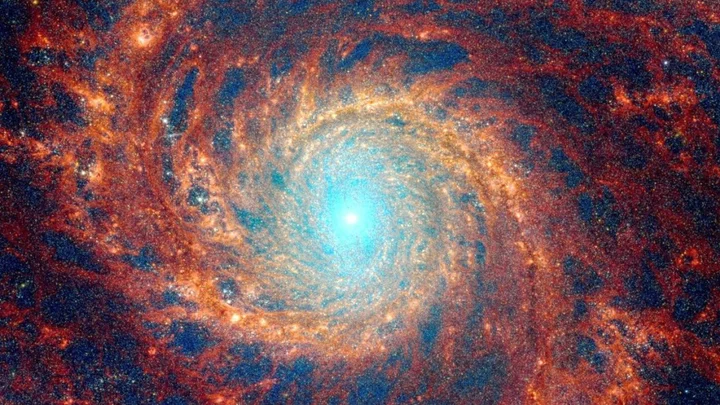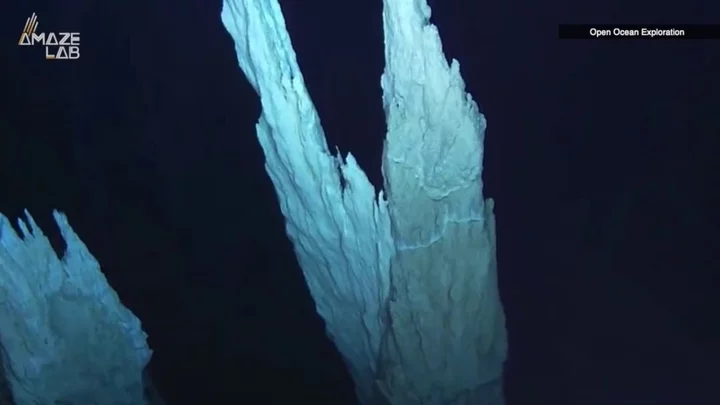
Roundup: Alycia Debnam-Carey Returns to 'Fear the Walking Dead'; Browns Sign Joe Flacco; Cam Rising Returning
Alycia Debnam-Carey made a shocking return on "Fear the Walking Dead", the Browns signed Joe Flacco, Cam Rising is returning and more in the Roundup.
2023-11-20 20:15

Shaftesbury Rethinks London Portfolio Sale as Bids Fall Short
Shaftesbury Capital Plc has scrapped plans to sell a portfolio of properties in London’s Fitzrovia district after bids
2023-11-20 19:27

NFL BetMGM Bonus Code: Win $200 for Eagles vs. Chiefs Tonight!
Turn a $10 bet into $200 in bonus bets in an instant at BetMGM. Read more to learn how you can use your bonus bets on Monday Night Football tonight.
2023-11-20 19:21

Exclusive-US securities regulator signals it may curb climate rule ambitions
By Jarrett Renshaw, Isla Binnie and Douglas Gillison U.S. Securities and Exchange Commission (SEC) officials have told lobbyists
2023-11-20 19:17

From Lululemon to Birkenstock, duplicate styles lure holiday shoppers
By Katherine Masters NEW YORK Lauren Maginness is a fan of Lululemon. But the 31-year-old product marketer in
2023-11-20 19:16

Biden turns 81 as worries about his age weigh on re-election prospects
By Steve Holland WASHINGTON U.S. President Joe Biden turns 81 on Monday, a milestone likely to draw attention
2023-11-20 18:30

Scientists discover fluffy 'alien' planet where it rains sand
Experts have discovered a fluffy “alien” planet where it rains sand in stunning new observations from the James Webb Space Telescope. The bizarre-looking planet is officially known as exoplanet WASP-107b and has a cloud of silicate sand that exists high within its atmosphere giving it its strange fluffy appearance. NASA’s James Webb Space Telescope (JWST) has been responsible for some astounding findings since it was launched in 2021, including a mysterious galaxy shaped like a question mark. Now, observations made by the telescope have been used by experts who have been able to determine the atmospheric composition of the exoplanet that was pictured. A team of European astronomers found that water vapour, sulfur dioxide and silicate sand clouds existed in the exoplanet’s diverse atmosphere. The exoplanet WASP-107b is one of the lowest-density planets that astronomers are aware of. To put it into context, it is the same size as Jupiter, but has just 12 per cent of Jupiter’s mass. Thanks to its low density, it has allowed scientists to take a deeper look into the planet’s atmosphere, exploring 50 times deeper than would be possible with denser planets. The discovery of sulfur dioxide was a surprise because the host star it orbits only emits a small amount of high-energy light photons. But, its low-density atmosphere allows the photons to penetrate WASP-107b’s atmosphere where the chemical reaction that creates sulfur dioxide can occur. They also discovered that it essentially rains sand on the exoplanet due to the presence of clouds high in the atmosphere made up of fine silicate particles. Experts believe the clouds of sand form in the same way as rain does on Earth as the droplets continually fall and condense back into cloud form. The lead author of the study, Leen Decin from Katholieke Universiteit Leuven in Belgium, explained: “JWST is revolutionizing exoplanet characterisation, providing unprecedented insights at remarkable speed.” She added: “The discovery of clouds of sand, water, and sulfur dioxide on this fluffy exoplanet… is a pivotal milestone. It reshapes our understanding of planetary formation and evolution, shedding new light on our own solar system.” How to join the indy100's free WhatsApp channel Sign up to our free indy100 weekly newsletter Have your say in our news democracy. Click the upvote icon at the top of the page to help raise this article through the indy100 rankings.
2023-11-20 18:29

'Not even in my control': Iman Vellani isn't bothered by The Marvels failing at the box office
Iman Vellani isn't concerned that her film 'The Marvels' has been a box office disaster as she doesn't feel it is a problem she can solve.
2023-11-20 18:28

Jagtar Singh Johal: Family of Scot detained in India appeal to David Cameron
Scottish Sikh rights campaigner Jagtar Singh Johal has been held by the Indian authorities since 2017.
2023-11-20 18:27

Arsenal & Man Utd on alert as striker's agent confirms plans for January transfer
The agent of Santos striker Marcos Leonardo has confirmed the Arsenal & Man Utd target will leave the club in January.
2023-11-20 18:19

Hedge funds ghost tech stocks and sell consumer staples - Goldman Sachs
By Nell Mackenzie LONDON Global hedge funds ditched technology stocks by selling long positions and exiting short bets
2023-11-20 18:17

'Lost City' deep in the Atlantic is like nothing else we've ever seen on Earth
The reality of what lies within our oceans has fascinated people since time immemorial, so it’s no wonder we’ve created countless myths about the watery depths. But step aside, Atlantis, scientists have discovered a real Lost City beneath the waves, and this one is teaming with life. The rocky, towering landscape is located west of the Mid-Atlantic Ridge mountain range, hundreds of metres below the surface of the Atlantic Ocean, and consists of massive walls, columns and monoliths stretching more than 60 metres (200ft) tall. To be clear, it’s not the home of some long-forgotten human civilisation, but that doesn’t make its existence any less significant. The hydrothermal field, dubbed the “Lost City” upon its discovery in the year 2000, is the longest-lived venting environment known in the ocean, Science Alert reports. Nothing else like it has ever been found on Earth, and experts think it could offer an insight into ecosystems that could exist elsewhere in the universe. For more than 120,000 years, snails, crustaceans and microbial communities have fed off the field’s vents, which spout out hydrogen, methane and other dissolved gases into the surrounding water. Despite the absence of oxygen down there, larger animals also survive in this extreme environment, including crabs, shrimps and eels. Although, they are, admittedly, rare. The hydrocarbons produced by its vents were not created by sunlight or carbon dioxide, but by chemical reactions way down on the seafloor. This is how life on our planet may have originated some 3.7 billion years, and how it could be formed on others. "This is an example of a type of ecosystem that could be active on Enceladus or Europa right this second," microbiologist William Brazelton told The Smithsonian back in 2018, referring to the moons of Saturn and Jupiter respectively. "And maybe Mars in the past." The tallest of the Lost City’s monoliths has been named Poseidon, after the Greek god of the sea, and it measures more than 60 metres high. Meanwhile, just northeast of the tower, is a cliffside where the vents “weep” with fluid, producing "clusters of delicate, multi-pronged carbonate growths that extend outward like the fingers of upturned hands", according to researchers at the University of Washington. There are now calls for the Lost City to be listed as a World Heritage site to protect the natural phenomenon, particularly given humans’ propensity to destroy precious ecosystems. Back in 2018, it was confirmed that Poland had won the rights to mine the deep sea around the thermal field. And whilst, in theory, the Lost City would not be touched by such works, as Science Alert notes, the destruction of its surroundings could have unintended consequences. Sign up for our free Indy100 weekly newsletter Have your say in our news democracy. Click the upvote icon at the top of the page to help raise this article through the indy100 rankings
2023-11-20 17:57
